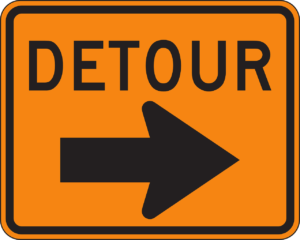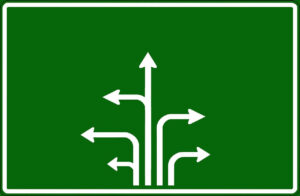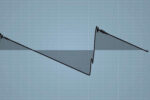What is a Bridge in Music?

In this article we’ll explain clearly what a bridge is in music, how to identify one, and how they function to make a song more interesting towards its end.
Ever found yourself uncontrollably hitting the replay button after a song finishes? Chances are, the magic lies in a killer bridge. Sure, a catchy chorus might get stuck in your head or interesting harmonic choices and movement may tickle your ears, but it’s the bridge that sets the stage for an epic payoff.
In this article, we’re taking a deep dive into the world of song structure as we uncover the secrets behind a bridge’s role. We’ll explore what a bridge is for in music, how to spot one and how it can inject life and variety into a song’s arrangement.
What is a bridge?
Every time we listen to a song, the same familiar song-form landmarks crop up: in pop music, that’s the well-known Intro, Verse, Chorus, Bridge, and Outro.
While the verses and choruses build an increasingly familiar narrative, and tell the song’s message through lyrics and instrumentation, the bridge is often the moment that pricks up your ears as a standout, unique moment because it takes you to new sonic territories.

So how does the bridge function in music?
The bridge is usually strategically placed in the second half of a song, providing relief from the repetitive nature of the established verse and chorus instrumentation, the groove and lyrical message.
It acts as a musical detour, a departure from what the audience has experienced so far, this can be both in terms of melody and lyrics. This is the songwriter’s opportunity to introduce a new and contrasting section that explores different rhythms and harmonies within a song’s composition. This variation adds depth and aims to keep the listener interested at the latter stages of a song.
Importance of Bridges in Song Structure
So, why are bridges important in a song? Well, the bridge gives the listener a break from the repetition of the verse and chorus. It adds something fresh and exciting to the song, kind of like a plot twist in a story!
The power of variation
The bridge is a one-time occurrence, temporarily diverting a song’s trajectory into breakdowns, as heard in SOPHIE’s JUST LIKE WE NEVER SAID GOODBYE, buildups as heard in ROSALIA’s VAMPIROS, false crescendos as heard in Tame Impala’s New Person, Same Old Mistakes.. A good bridge often sets the stage for a powerful return to a final climactic chorus at a song’s finale. An effective bridge can distract a listener from the previously repetitive elements to then bring multiple elements from the arrangement back for an captivating ending.
Different ways to employ a bridge
Bridges offer songwriters a world of possibilities for creative expression. This section could be introducing a new chord progression, instrumentation, rhythm, feel, tempo, or even a change in key or time signature.
Take, For example, the bridge in Butterflies by Skrillex, Starrah, and Four Tet. Here, Four Tet seamlessly introduces a kalimba into the arrangement. This boldly establishes a strong break away from the song’s previous sound palette while maintaining its dancefloor focused, high production rhythm section.
However, it’s crucial not to overcomplicate the bridge. The goal is to seamlessly transition into something new without disrupting the flow of the song, allowing it to smoothly land back into the track’s finale with impactful resonance.
Bridge or middle 8, what’s the difference?
While there is often confusion around these two section names, the term ‘Middle 8’ is a bridge that simply spans eight bars. This section name was coined as it commonly appeared in pop music, where shorter radio-ready hits were preferred for broadcast.
For example, The Beatles’ track Happiness is a Warm Gun has an eight bar deviation from the rest of the track where a repeating vocal phrase locks in with a fuzz-drenched guitar line.

How Long Should a Bridge Be in a Song?
Well, there’s no set rule for the exact length of a bridge. It typically lasts around 8-16 bars, but it really depends on the flow of the song and what works best for the music.
For some, keeping a bridge concise within eight bars serves the purpose of refreshing the listener without deviating too far from the song’s musical elements, maintaining a commercial radio-friendly structure. On the other hand, some artists view the bridge as a liberating moment, a chance to break free from the constraints of the verse and chorus. Some, more experimental artists like Radiohead venture into uncharted territories as heard in Weird Fishes/Arpeggi.
The golden ratio
Understanding the psychology of the listener’s experience is key to crafting a compelling song. Originating in the 1930s from broadway musicals, the AABA song structure became a staple in swingin’ Jazz music — Chet Baker, Ella Fitzgerald and Bill Evans to name a few.
The AABA pattern creates the ideal mix of repetition and variation to keep an audience engaged. Repetition is comforting to the ear, but too much can lead to predictability. The A section effectively familiarizes the listener with a melody and chord progression while the B section shows the listener something new and prepares for a return to the final A section once again.

While there are no set rules and you can push the boundaries of song structure to your heart’s content, it is helpful to have this ratio in the back of your mind to prevent the music from getting too repetitive or changing too much.
Under the microscope
The AABA variation can be seen extending beyond song structure. Variation in instrumental parts can create subtle propulsion and additional interest creating multiple moving cogs within a song — all the while working together to create the overall harmony and groove.

Re-Rewind
In conclusion, the bridge emerges as a dynamic section that contrasts with the rest of a song. Beyond being solely a musical interlude, it can maintain a song’s narrative while taking it somewhere new.
A bridge can be utilized to not only introduce refreshing sonic elements but also acts as a pivotal force, contributing to a satisfying resolution, to propel a song into its final stages — commonly in the form of a conclusive chorus. As this final chorus lands, the bridge has set the stage for a larger-than-life payoff that leaves a lasting impression and hopefully will have the listener itching to hit replay.








